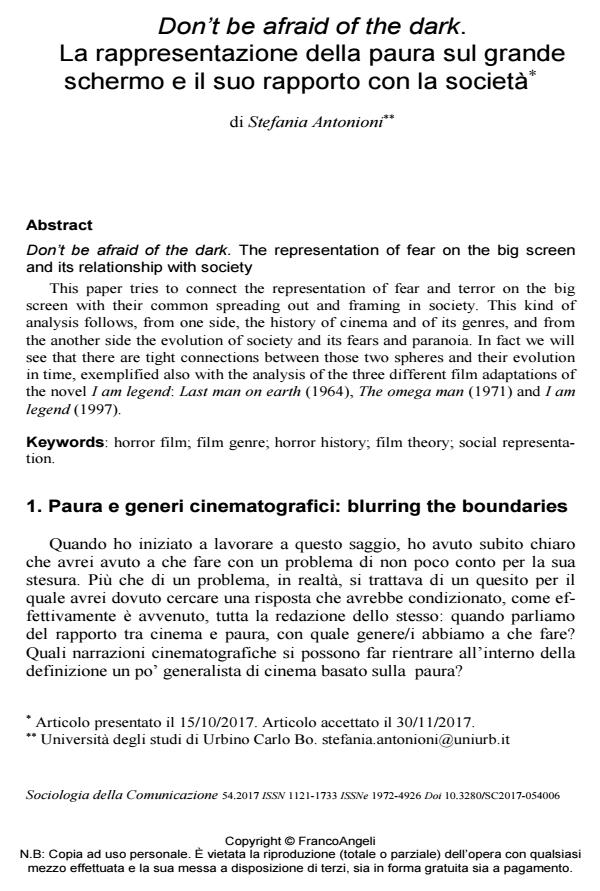Don’t be afraid of the dark. La rappresentazione della paura sul grande schermo e il suo rapporto con la società
Titolo Rivista SOCIOLOGIA DELLA COMUNICAZIONE
Autori/Curatori Stefania Antonioni
Anno di pubblicazione 2018 Fascicolo 2017/54
Lingua Italiano Numero pagine 22 P. 80-101 Dimensione file 101 KB
DOI 10.3280/SC2017-054006
Il DOI è il codice a barre della proprietà intellettuale: per saperne di più
clicca qui
Qui sotto puoi vedere in anteprima la prima pagina di questo articolo.
Se questo articolo ti interessa, lo puoi acquistare (e scaricare in formato pdf) seguendo le facili indicazioni per acquistare il download credit. Acquista Download Credits per scaricare questo Articolo in formato PDF

FrancoAngeli è membro della Publishers International Linking Association, Inc (PILA)associazione indipendente e non profit per facilitare (attraverso i servizi tecnologici implementati da CrossRef.org) l’accesso degli studiosi ai contenuti digitali nelle pubblicazioni professionali e scientifiche
This paper tries to connect the representation of fear and terror on the big screen with their common spreading out and framing in society. This kind of analysis follows, from one side, the history of cinema and of its genres, and from the another side the evolution of society and its fears and paranoia. In fact we will see that there are tight connections between those two spheres and their evolution in time, exemplified also with the analysis of the three different film adaptations of the novel I am legend: Last man on earth (1964), The omega man (1971) and I am legend (1997).
Parole chiave:Horror film; film genre; horror history; film theory; social representation.
Stefania Antonioni, Don’t be afraid of the dark. La rappresentazione della paura sul grande schermo e il suo rapporto con la società in "SOCIOLOGIA DELLA COMUNICAZIONE " 54/2017, pp 80-101, DOI: 10.3280/SC2017-054006